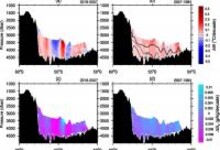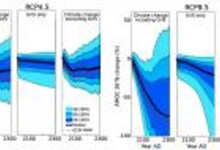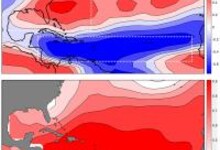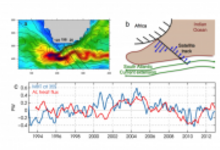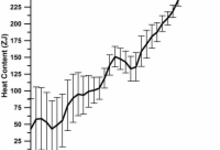Research Highlights
We aim to feature the latest research results from US scientists whose published paper features work that is sponsored by one or more sponsoring agency programs of US CLIVAR (NASA, NOAA, NSF, DOE, ONR). Check out the collection of research highlights below and sort by topic on the right. Interested in submitting an article for consideration? See our Research Highlight Submission Guidelines page for more information.
A recent investigation has shown that in the abyssal southeast Indian Ocean the Antarctic Bottom Water (AABW) freshening and warming have changed over the last decade. After a third full repeat of line IO8S in the region, GO-SHIP observations suggest strongly accelerated AABW freshening since 2007.
A new study shows that the AMOC is more sensitive to warming, including changes in the atmospheric hydrological cycle, than Greenland Ice Sheet melting. However, Greenland Ice Sheet melt further increases the projected AMOC weakening.
A new study shows that when conditions in the deep tropics are good for hurricane intensification, they are bad along the US coast. This sets up a barrier around the US coast during active hurricane periods that inhibits hurricanes from strengthening and usually causes them to weaken.
A new study concludes that the likely source of changes in heat that caused the recent slowdown in the AMOC was from a decrease in the Agulhas Leakage and that changes in convection in the subpolar North Atlantic was an unlikely contributor.
A new paper shows that global mean surface temperature (GMST) is a measure of the Earth’s surface warming, not a measure of total accumulated heat energy in the Earth’s system. And the slowdown in GMST increase is most likely a redistribution of excess heat into and within the ocean.

